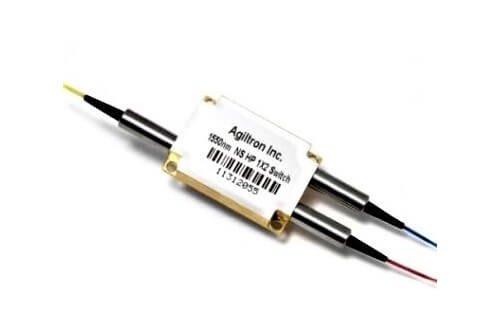SKU: NSBW, NHBW
The NanoSpeed™ Series 1×2 solid-state fiber optic switch connects optical channels by redirecting an incoming optical signal into a selected output optical fiber. This is achieved using patent non-mechanical configurations with solid-state all-crystal designs, eliminating the need for mechanical movement and organic materials. The broadband series of we fiber optic switches is designed to meet the most operation requirements of wavelength band in addition to ultra-high reliability, fast response time, and continuous switching operation. This series of switches is intrinsically bidirectional and selectable for polarization-independent or polarization-maintain by the fiber type.
The we Series switch is controlled by 5V TTL signals with a specially designed electronic driver having performance optimized for various repetition rates.
The rise/fall time is intrinsically related to the crystal properties, and the repetition rate is associated with the driver. There are poor frequency response sections due to the device resonances. The we devices are shipped mounted on a tuned driver.
The we series switches respond to a control signal with any arbitrary timing with frequency from DC up to MHz. The switch is usually mounted on a tuned driver before shipping. The electrical power consumption is related to the repetition rate at which the switch is operated.
The dual-stage configuration increases the extinction ratio or cross-talk value.




Reviews
There are no reviews yet.